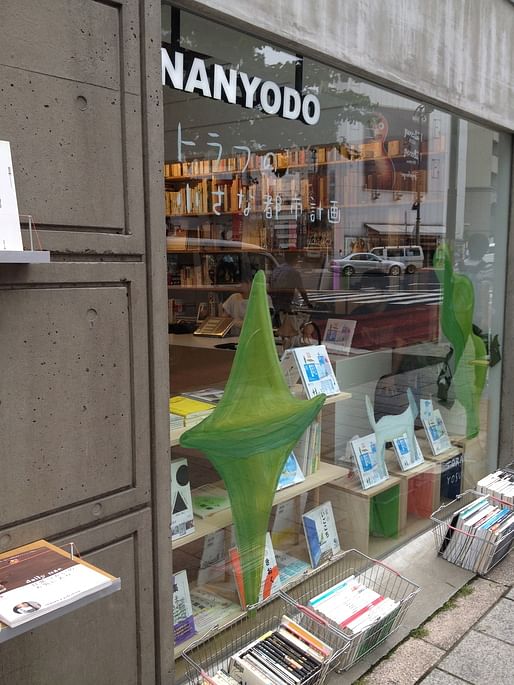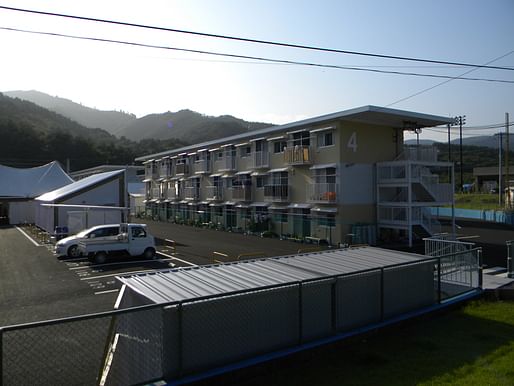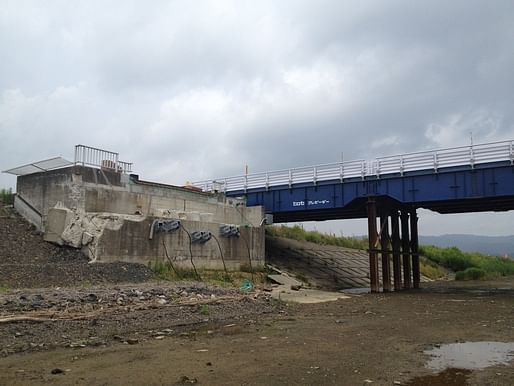
Foreword
First of all I am very sorry for neglecting my blog for the past month.. but I promise it was not intentional... after a ton of fieldworks, previous engagements (lectures+symposium+meetings), volunteer work, some private time with friends and gsd housing crisis, I was left simply exhausted... But luckily I am jet-lagged so I am up in the weee hours of the night (PST) catching up on my blogging among other things.
There will be a series of blogs about my month (July 01-31, 2012) in Japan, chronologically ordered and categorized by Locations. Some of the stuff that I will share may not be very architectural, but I just want to share with you guys my overall experience.
Japan Blog #01 of 03 : Tokyo>>Sendai>>Ishinomaki
The first leg of my trip started when I landed in Tokyo. With a half a day in Tokyo (6:00AM – 2:00PM) I met up with a friend, Yukinori Yamakawa who is an Architecture History Student at Waseda University took me to some key Architecture sites around Tokyo I have yet to visit...
Yokohama Port Terminal by Foreign Office Architects
Mikimoto Tower By Toyo Ito
Nakagin Capsule Apartment Building By Kisho Kurokawa
Shizuoka Press & Broadcasting Building By Kengo Tange
He also took me to an amazing Architeture Bookstore called Nanyodo. 
They have a good selection of books in Japanese contemporary architecture that is actually written both in english and japanese.. too bad I am traveling on a broke student budget... Oh well
>>>Here are some photos/videos of tokyo that I took which does not glamorizes the city rather what I believe shows the real side of certain parts.
Tokyo is a city of interesting adjacencies i.e. Traditional Temple + Tombs + Trains Station + Late 80's early 90's high density housing + mix-use building... but this city is still somewhat considerably organized unlike Hong Kong or Manila.
Tokyo is also a city of movement, from different modes of transportation, either by foot, by bicycle, by car/train/bus in different levels: overpass, bridges, streets, tunnels, underpass & subways.
Then I took a quick 2 hr northbound bullet train ride to Sendai where I met up with my professor's former student, Kazuhiko Ota who accompanied me in Ishinomaki. He is a brilliant photographer, videographer and composer that is now based in Sendai. He is currently working for Sendai School of Design [Look below]

 >>This is a prefab satellite building for the Graduate Students of Sendai School of Design. Their former building located in the hilly suburbs Sendai was severely damaged by the March 11 Earthquake. So they were temporarily relocated in an empty lot of Tohoku University Campus until a new architecture building is erected. I believe this was built in 2 months and opened last December and won a “Good Design Award”. It still smells like a combination of fresh paint/sawn lumber. The finishes and color pallet are very simple, “off-the-shelf” products with an intent that the building and the space will serve as a backdrop for the student works.
>>This is a prefab satellite building for the Graduate Students of Sendai School of Design. Their former building located in the hilly suburbs Sendai was severely damaged by the March 11 Earthquake. So they were temporarily relocated in an empty lot of Tohoku University Campus until a new architecture building is erected. I believe this was built in 2 months and opened last December and won a “Good Design Award”. It still smells like a combination of fresh paint/sawn lumber. The finishes and color pallet are very simple, “off-the-shelf” products with an intent that the building and the space will serve as a backdrop for the student works.
Also in Sendai I was able to visit Toyo Ito's Sendai Mediatheque not only to visit this iconic building but also catch up with some work by bumming off from their free wifi. 

 >>During my visit, there was photo exhibition going on each floor showcasing the building pre/post March 11, 2010. (I tried taking photos of it but I was quickly reprimanded by the staff but I am pretty sure you can google some of these images and even youtube a cctv footage inside the mediatheque during the earthquake) 1.5 years later and the building itself is still in repair but slowly getting there... I asked one of the staff members there whether the amount of people using the building declined after the disaster and she said yes but it is slowly going back to normal. Just like everything else in Sendai.
>>During my visit, there was photo exhibition going on each floor showcasing the building pre/post March 11, 2010. (I tried taking photos of it but I was quickly reprimanded by the staff but I am pretty sure you can google some of these images and even youtube a cctv footage inside the mediatheque during the earthquake) 1.5 years later and the building itself is still in repair but slowly getting there... I asked one of the staff members there whether the amount of people using the building declined after the disaster and she said yes but it is slowly going back to normal. Just like everything else in Sendai.
Then we took a 2 hr northeast bound bus ride to Kitakamicho, Ishinomaki and met up with a local business owner (Kumagai Master Thatchers) and NPO founder (Rias no Mori Project) Akio Kumagai of and his team. We stayed in Mr. Kumagai's newly renovated house in Kitakamicho.
If I understood correctly, this house was partly destroyed by the tsunami and they tried to salvage and reuse as much as possible, like the roof tiles and the japanese garden which miraculously survived. This house now serves as the main lodging facility for volunteers who work in Ishinomaki during holiday breaks. Unfortunately during my visit, there only a few volunteer projects to do because most college students are in the midst of their finals. So during our time in Ishinomaki, we helped the team to prepare for the volunteers that are coming during the break: we cleaned the house, set up the futons, tilled the backyard and planted some crops that will eventually be consumed by the volunteers.
Every morning we also started clearing out tall grasses in one of the Rias no Mori Project Site which is a community center/ summer camp / horse stables in Satoyama which is funded by the Japan Society of New York. [Look Below] This program will serve as a respite for the children that were badly affected by the disaster. It is also a way to promote and preserve the traditional rural life as well as facilitate the interaction between elderly citizens and children whom both severely affect by the tragedy.
This program will serve as a respite for the children that were badly affected by the disaster. It is also a way to promote and preserve the traditional rural life as well as facilitate the interaction between elderly citizens and children whom both severely affect by the tragedy.
While in Ishinomaki I also visited a couple of housing projects that were developed for the tsunami victims in town.
The first one is a permanent housing community aimed towards building “Re-normalizing” the life of victims by creating a permanent housing unit that utilizes as much traditional material (ie. domestic wood beams+columns, slate and plaster) and carpentry as possible. 

 >>This project was a collaboration between Rias no Mori and Kogakuin University. This community of 11 units perched atop a hill overlooking Shirahama Coast. According to one of the residents the not only the thought of permanence is comforting, but as well the tangible familiarity of these materials contribute to the easiness of living in place that was severely affected by the disaster.
>>This project was a collaboration between Rias no Mori and Kogakuin University. This community of 11 units perched atop a hill overlooking Shirahama Coast. According to one of the residents the not only the thought of permanence is comforting, but as well the tangible familiarity of these materials contribute to the easiness of living in place that was severely affected by the disaster.
The second housing community I visited was Shigeru Ban + Voluntary Architects Network + MUJI's Container Housing in Onagawa, Miyagi. 

 >>This is a very much publicized project utilizing shipping containers as housing modules which may not be such a innovative idea now, but in a community that is in desperate need of inexpensive, fast and efficient housing, it is a life saver. Before going here, I have read that before the Japanese Prefectural Government of Miyagi was against this proposal, but after 9 buildings (6 x 3-story building + 3 x 2-story building) totaling to 189 units built within 3 months they were happy.
>>This is a very much publicized project utilizing shipping containers as housing modules which may not be such a innovative idea now, but in a community that is in desperate need of inexpensive, fast and efficient housing, it is a life saver. Before going here, I have read that before the Japanese Prefectural Government of Miyagi was against this proposal, but after 9 buildings (6 x 3-story building + 3 x 2-story building) totaling to 189 units built within 3 months they were happy.
>>After visiting this two communities heres my opinion from my observations: both were perched atop a hill, away from the possibility of getting hit by a tsunami but is this the proper solution? Both are away from any form of community amenities like shopping, civic buildings or place of work. Moreover locating housing communities on hilltops and making it a viable solution demands for higher density, therefore more housing units and adequate social spaces takes the back seat.For example, when I visited the Onagawa housing facility, there are designated social spaces that were locked and not used because of the lack of managing personnel, and the main covered public space is only really utilized during market days which is once a week. So often young children are not out playing and socializing with neighbors instead they are limited within the confides of their housing units.

I am not suggesting big play yards.. rather carefully placed trees here and there + some seating can successfully organize social spaces and influence the daily lives of its residents.
To be honest before visiting Ishinomaki, I was a bit nervous to see what was going on. All the information that I know is coming from television and most of the time they paint this town as very desolate and in dire need of help. Which is partly true, but what I experience after talking to locals, victims of this tsunami is an overwhelming sense of acceptance of their “new normal” and hope to improve this in any way, shape or form.
Here are some of the photos I took while exploring the town both by car + bicycle:
Pile of cars destroyed by the tsunami. (This area is heavily guarded)
Wood from Mr. Kumagai former house which is now used as fuel for their furnace.
Piles of Debris on our way to Onagawa Temporary Housing about atleast 2 kilometers at an average of 25' high.... Literally a sh*t ton of trash with nowhere to go..for now I hope.
Kumagai Master Thatchers conserving the natural environment (reed marshlands) and the industry of thatching.
Saline stricken Rice field... It could also take years to desalinate the farm and produce normal crops. 
Random Boat on the side of the road no body of water nearby.
New levy for the Kitakami River.
Broken (Grey) + Temporary(Blue) Kitakamicho Bridge
Okawa Elementary School, Ishinomaki, Japan
Look at the middle of the picture... This was a former town swallowed by the ocean. View from Aojima, Ishinomaki.
Another farming town destroyed by the tsunami...
No Comments
Block this user
Are you sure you want to block this user and hide all related comments throughout the site?
Archinect
This is your first comment on Archinect. Your comment will be visible once approved.